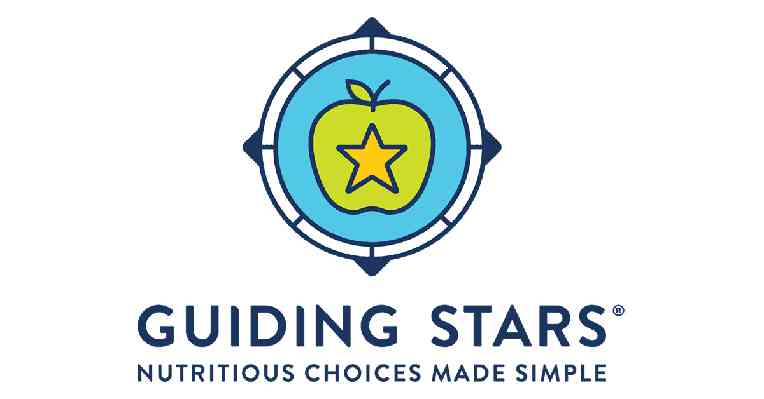Are Fish Oil, Salmon Oil, Cod Liver Oil & Krill Oil the Same?
Pondering Paleo: Is Evolutionary Eating Right For You?
Whether you like fish and seafood or not, you’ve probably heard by now that various health authorities are urging Americans to eat more fish and seafood. The 2015 Dietary Guidelines, for example, suggest we consume at least 8 ounces of seafood per week (more if you’re pregnant). And the American Heart Association recommends eating fish—particularly fatty fish like salmon, mackerel, lake trout, herring and sardines—at least twice a week. In general, we are doing better with this: in 2015 the average seafood intake was 15.5 pounds—up about a pound from the previous year. That’s a good sign that people are getting the message, though we are still falling short of recommendations.

Seafood Health Benefits
Fish and shellfish are excellent sources of protein, are low in saturated fats and contain a slew of minerals. Compared to beef and poultry, seafood provides more vitamin B12, vitamin D and of course, omega-3 fatty acids (including DHA and EPA). Omega-3 fatty acids are polyunsaturated fats, and are associated with plenty of health benefits—and fish and shellfish are the main food sources of EPA and DHA. (ALA is another Omega-3 fatty acid that’s found in plants such as soy, walnuts, flax and canola oil.) Humans need omega-3s, but cannot produce them on our own, so it’s essential we get them from our food. I’ve covered the nutritional merits of seafood before for Guiding Stars so check it out, but aside from those, here’s a short list of health benefits:
Do omega-3 or fish oil supplements provide the same benefits as eating fish?
Well, they do provide omega-3s, but according to the National Institutes of Health, while there are moderate health benefits found with eating seafood, the health benefits of just swallowing omega-3 supplements are unclear. Overall, several meta-analyses have not found convincing evidence that omega-3s have a protective effect against heart disease or other cardiovascular-related issues. Nor do they seem to have an effect on cognitive decline or eye diseases like macular degeneration.
One thing that omega-3 supplements may help with is rheumatoid arthritis. Several studies (including a 2016 study) indicate that people who take omega-3 supplements experience less joint tenderness overall and less joint stiffness in the morning.
If you want to take omega-3 supplements because you don’t like seafood or are allergic to it, please consult with your physician. While omega-3 supplements are generally regarded as safe, you may have a condition or be taking medications that don’t mix well with them. Otherwise, catch those health benefits getting more seafood on your plate, says Jennifer McGuire, MS, RD, a dietitian with the National Fisheries Institute. “Seafood offers an abundance of nutrients we all need. Your best bet is to eat fish as a whole food—not just for its nutrients package, but because it’s a delicious, feel-good food.”
Fish vs. Fish Oil Supplements: Which is Better for a Healthy Pregnancy?
Omega-3 fatty acids boost brain development in fetuses and babies. They are widely considered healthy and safe for women who are pregnant, nursing or planning to become pregnant. But which is the better source of omega-3s: fish or fish oil supplements?

On the whole, eating fish is the ideal way to consume healthy fatty acids. Studies suggest that eating the real thing gives women more consistent health benefits than taking fish oil supplements, because fish contains additional nutrients. Most species are good sources of lean protein, iodine, vitamin D, selenium and more. That’s why doctors and the Food and Drug Administration recommend that women eat 8-to-12 ounces of seafood a week.
But there’s a catch: Some species of fish and shellfish contain high levels of mercury, which inhibits brain development. A new report from EWG shows that following the FDA guidelines may actually harm fetuses and babies by exposing them to too much mercury and not enough omega-3s. Learn more about the study.
EWG recommends that women who are pregnant or nursing aim for one or two four-ounce servings each week of fish that is high in omega-3s and low in mercury. “Best bets” include wild salmon, sardines, mussels, rainbow trout and Atlantic mackerel. Click here for EWG’s comprehensive recommendations about fish to eat or avoid while pregnant.
Many pregnant or nursing women, however, choose not to eat seafood, or don’t eat enough to meet their nutritional needs. Some worry about mercury, other contaminants and sustainability. Others don’t like the taste, follow a vegetarian diet or have a hard time finding or affording good seafood in their region. For these individuals, fish oil supplements are an excellent alternative. (Note: Prenatal multivitamins typically do not contain omega-3s.)
The two omega-3s found in fish and fish oil supplements are DHA (docosahexaenoic acid) and EPA (eicosapentaenoic acid). Federal dietary guidelines recommend that women get an average of 250 milligrams per day.
While fish eaters can get the recommended amount of omega-3s from diet alone, vegetarians and non-fish-eaters need supplements. Nuts and vegetables, including canola oil, soybean oil, flax seeds, chia seeds and walnuts contain a third omega-3 fatty acid known as ALA (alpha-linolenic acid), but this is a less effective source of essential fatty acids during pregnancy.
Important note for moms: Although fish oil supplements are a healthy choice during pregnancy, fish liver oil supplements, such as cod liver oil, are not. These oils contain a lot of vitamin A, which can cause birth defects when taken in excess during pregnancy. Click here to learn more about how excess vitamin A can harm children’s health.
Are Fish Oil, Salmon Oil, Cod Liver Oil & Krill Oil the Same?
Today, the omega-3 industry is specializing more than ever. On the supermarket shelf, you don’t just find fish oil any longer, but a broad range of products under that main heading, including cod liver, salmon, and even krill oil.

While all of these sources contain EPA and DHA omega-3 fatty acids, the composition and nutritional profiles of the oils can be quite different. So how do you know which one is best for you?
Below, we’ll walk you through the finer points of omega-3 supplements, from how they are made to the doses necessary to deliver results.
Where Does Omega-3 Fish Oil Come From?
The majority of the world’s fish oil is a byproduct of the animal feed industry (1). Anchovy, herring, sardines, and mackerel are typically fished off the coast of South America or North Africa. While the fish meat gets ground into fishmeal (a popular source of feed for farmed fish and animals), the oil is multi-purposed. Some of the oil goes towards fish feed and pet food fortification, while the rest is refined and encapsulated for human consumption.
As the Norwegian newspaper Aftenposten reported, there’s often no quality control differentiation between the oil destined for people and animals prior to refining (2).
This origin story explains why regular fish oils typically taste and smell bad and often produce ‘fish oil burps’. Since the main goal is to produce fishmeal, the manufacturers have little interest in maintaining the quality of the fish oil. The oil is usually extracted last and often goes rancid within a short period of time. New techniques enable manufacturers to make the oil taste less offensive. However, a rancid fish oil can never be fully restored back to freshness.
“But My Omega-3 Supplement Says It’s From Norway!”
The vast majority of the world’s fish oil is sourced from South America and North Africa, that’s true. But if that oil is later transported to Norway for refinement, it’s often branded as “Norwegian”, regardless of origin. To learn more about the source of the oil in your omega-3 supplement, ask your manufacturer about where the fish were harvested.
Unfortunately, fish oils branded as Norwegian or Icelandic are often only refined there.
How Much Omega-3 Should I Take Per Day?
Fish oils derived from a blend of sardines, anchovies and other small oily fish naturally have the highest omega-3 content – up to 30% combined EPA/DHA (3). On the other hand, half of the fats are saturated, or the double of what is found in salmon or cod liver oil.
If the fish oil has not been concentrated, it typically takes between 8 to 10 large capsules daily to get the 3000 mg of EPA/DHA omega-3s recommended for anti-inflammatory benefits. For more information about calculating the correct omega-3 dose, read this blog.
FISH OIL PROS FISH OIL CONS Contains the highest percentage of EPA/DHA. Byproduct of the animal feed industry. – Typically rancid. – Half of the fats are saturated.
What’s the Difference Between Fish Oil and Salmon Oil?
Salmon oil is becoming a more popular omega-3 source today, in large part because it sounds good. You visualize a beautiful salmon fillet, and imagine you are getting the same quality you would if you ate wild caught fish.
Salmon is an expensive fish, so it’s not the fillet that’s turned into oil, but the head, intestines, and fins. While these are perfectly fine parts to consume, the reality is quite different than the image of a fish fillet being reduced to a few fish oil capsules.
Many salmon oils also come from sea-farmed salmon, which is different nutrition-wise from wild-caught fish. The farmed salmon delivers the same nutrition that it consumes, and it can be difficult for consumers to discover what these farmed fish were fed, especially when the animal comes from a foreign country.
Is Sea-Farmed Salmon Better than Wild Salmon?
Sea-farmed salmon usually contains more pro-inflammatory omega-6s (4) and saturated fats than wild salmon (5). Depending on the type of salmon and the feed it received, the EPA/DHA content is relatively low, typically ranging from 8 to 16%. To get a clinical dose of 3000 mg EPA/DHA, you would need to consume around 20 capsules per day. The high cost of salmon omega-3s is also a major drawback, especially when compared to regular fish oil capsules.
On the plus side, sea-farmed salmon oil is often fresher than the wild version because the time it takes to harvest the fish and process the oil is shorter.
If you happen to find a wild salmon supplement, the fatty acid balance will resemble cod liver oil – but still contains less omega-3. That said, wild salmon oil has often gone rancid not only because of the long transportation time, but also because the fish is often stained with blood (which accelerates the oxidation process).
SALMON OIL PROS SALMON OIL CONS Often fresh because of short time from harvest to processing. Often made from sea farmed salmon, potentially impacting nutritional value. Less saturated fats than regular fish oils. Low omega-3 levels compared to other sources. – More expensive per EPA/DHA dose.
Fish Oil vs. Cod Liver Oil
Cod liver oil is the original omega-3 source. Already in the 1700s, doctors were recommending cod liver oil for patients with joint pains, although its rich history dates back further (6). Considered a safe food product, cod liver oil is especially recommended for children and pregnant women in countries like Norway (7).
Part of the reason cod liver oil has been used for so many years is that the oil is easy to extract. The cod liver contains its omega-3-rich oil in small vacuoles. When the oil is extracted, there is limited amounts of rancidity-creating blood present. However, since cod liver oil was historically left in open vats and exposed to heat and oxygen, the poor taste became notorious and limited its popularity.
With modern technology and increased focus on freshness, cod liver oil has come a long way. For instance, Omega Cure® is tasteless and can even be used in chocolates and cookies.
Not All Cod Liver Oils Are Made Equal
While Omega Cure is a fresh, full-spectrum cod liver oil, store-bought cod liver oils are typically highly refined and often rancid. To learn more about how to find a fresh omega-3 product, read Making Sense of Fish Oil Oxidation Values.
Nutritional Benefits of Cod Liver Oil
Other than breast milk, cod liver oil is the only omega-3 source that also contains significant amounts of vitamin A and D — although the vitamin A and D levels in modern cod liver oils is typically significantly reduced due to the necessary purification of the oil.*
As for the omega-3s, it typically contains around 20% EPA/DHA, and has only half the amount of saturated fats of regular fish oils. To get a clinical dose of 3000 mg EPA/DHA, you would need to consume one tablespoon (15 ml) of oil or 15 capsules.
COD LIVER OIL PROS COD LIVER OIL CONS Long history of medicinal use & safety. If not manufactured correctly, vitamin A content may exceed dietary recommendations. Can be a good source of vitamin A, D.* – Less saturated fats than regular fish oils. – Often comes in liquid form, making it easier to get an effective dose. –
Krill Oil vs. Fish Oil
Krill oil is one of the newest types of omega-3 sources. While fish oil has been studied extensively by universities and international research centers for the last 40 years, researchers did not start collecting data on the benefits of krill oil until the 2000s. What’s more, many of the studies were released by the krill oil manufacturers themselves, raising questions about potential bias.
What Is Krill Oil?
Krill are small, shrimp-like creatures that are a favorite food of whales, dolphins, and penguins. Like most fish oils on the market, krill oil is a byproduct from the animal feed industry, where the main goal is to produce feed for farmed fish and animals. Krill is also a type of crustacean, and even the smallest amount can cause severe allergic reactions in people with shellfish allergies.
Compared to the previously-mentioned fish oil sources, krill oil is harder to extract. Manufacturers typically use solvents to extract the oil. In some cases, the use of these chemicals can have serious consequences. In 2012, for instance, chemicals caused a deadly explosion at one krill oil facility (8).
Does Krill Oil Contain Omega-3?
Compared to fish oil, krill oil contains less omega-3s — somewhere between 15 to 25% EPA/DHA, depending on the product.
Krill oil has become popular because many brands claim you only need one small capsule a day. If you read the krill oil manufacturers’ studies, however, the researchers used four capsules daily to document any meaningful increase of omega-3 in the body (9). If you also look closely at the amount of EPA/DHA per capsule in most brands, it typically takes more than 20 capsules to reach a clinical dose of 3000 mg EPA/DHA.
Unlike fish oil, krill contains powerful antioxidants called phospholipids. Manufacturers claim that EPA and DHA are attached to these phospholipids, allowing for better absorption. To date, we have been unable to find any independent reports that substantiate the claims that phospholipids make a difference in terms of bioavailability, especially compared to fresh omega-3 fish oil.
Is Krill Oil As Good As Fish Oil?
Krill oil lacks the volume of independent scientific research that cod liver oil and fish oil have received. In addition to the aforementioned phospholipids, manufacturers’ claims that the astaxanthin antioxidant provides additional benefits have not been proven (10, 11).
Krill oil manufacturers also struggle with rancidity issues. With a cost of 5-10 times more per omega-3 dose than regular fish oil, you’ve got to wonder if krill oil is worth it, especially until researchers learn more about its efficacy and safety.
KRILL OIL PROS KRILL OIL CONS Claims of better bioavailability, but the jury is still out on this question. Expensive compared to other omega-3 products. – Solvents are used to extract the omega-3s, raising safety questions. – Not enough independent studies to support manufacturers’ claims of efficacy at recommended doses.
What’s the Best Fish for Omega-3 Fatty Acids?
Taking a clinical EPA/DHA dose of any of these omega-3 oils should increase omega-3 index levels, lower triglyceride levels in the blood, and potentially deliver other positive health benefits as well. However, the manufacturing methods, the freshness factor, and the nutritional profiles of the oil will also impact clinical effects.
As you go forth looking at different omega-3 supplements, consider the source of the oil. Next, read the supplement label to determine the omega-3 daily dose you’ll need to consume, and investigate how fresh the oil is.
Finally, if you haven’t already, try Omega Cure. With the lowest oxidation levels on the market, it is the freshest omega-3 oil available. See the difference for yourself here!
An Effective Omega-3 Dose, Made Simple Experience the Omega3 Innovations difference for yourself with the most effective fish oil supplement on the market. Buy Now
References:
1. Halvorsen, Johannessen, Ida and Randi. Vi skal jo selge et produkt’: Oljen er produsert i anlegg som lager dyrefor – i Sør-Amerika.” Aftenposten. May 20, 2008.
2. Halvorsen, Johannessen, Ida and Randi. “Nordmenn kjøpte overpriset fiskeolje fra Sør-America for 285 millioner kroner i fjor.” Aftenposten. May 15, 2008.
3. Omega-3 Fatty Acid, Fish Oil, DHA (docosahexaenoic acid), EPA (eicosapentaenoic acid). WorldHealth.Net. American Academy of Anti-Aging Medicine. December 30, 2005.
4. Hamilton et al. Lipid composition and contaminants in farmed and wild salmon. Environmental Science and Technology. 2005 Nov 15; 39(22):8622-9.
5. Kirkpatrick, Kristin. Fish Faceoff: Wild Salmon vs. Farmed Salmon. Health Essentials. Cleveland Clinic. March 3, 2014.
6. Guy, Ruth. The History of Cod Liver Oil as a Remedy. The American Journal of Diseases of Children. 1923; 26(2):112-116. doi:10.1001/archpedi.1923.04120140011002.
7. Kosthold for gravide. November 1, 2015.
8. Neptune at fault in deadly plant explosion, CSST rules. CBC News. May 8, 2014.
9. Burri, Lena. Optimizing the Omega-3 Index with Krill Oil. Superba Krill. Aker BioMarine.
10. Daniells, Stephen. Krill and fish oil supplements equally effetive at boosting omega-3 levels, says DSM study. NutraIngredients-USA. September 10, 2015.
11. Salem, Norman and Kuratko, Connye. A reexamination of krill oil bioavailability studies. Lipids in Health and Disease 2014; 13:137. DOI: 10.1186/1476-511X-13-137.

